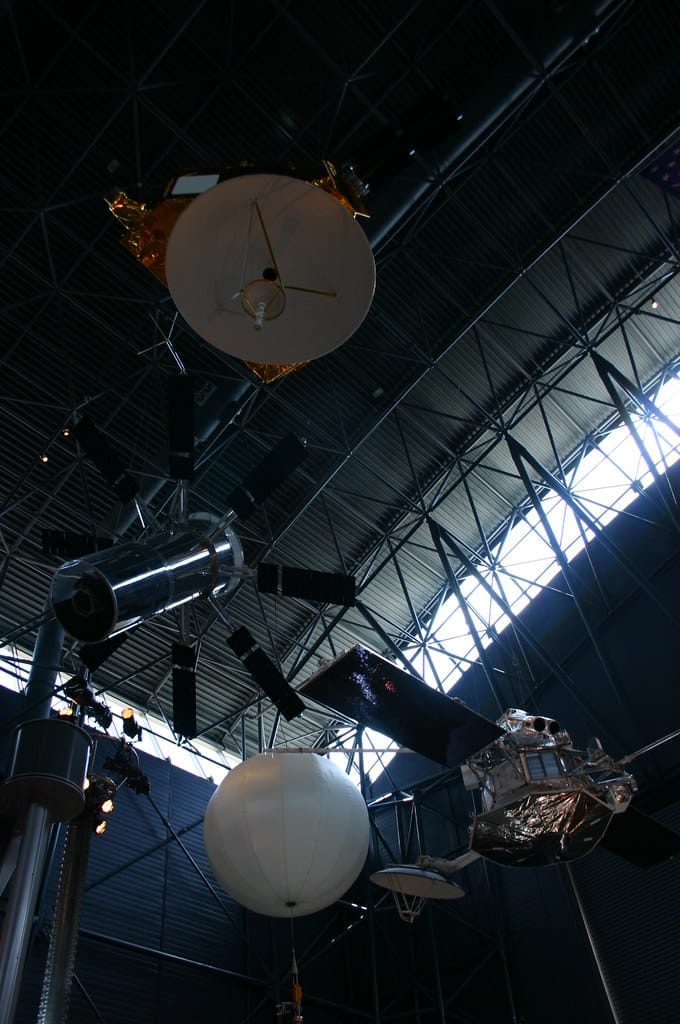Mystery Solved: 'Dead' 1967 NASA Satellite Springs Back to Life After 56 Years
After months of puzzling over mysterious radio signals, amateur radio operators have solved a cosmic cold case that's been 56 years in the making. The culprit behind the strange transmissions? A presumed-dead NASA satellite from the height of the Space Race, still stubbornly broadcasting from orbit.
The Mystery Unfolds
In early 2023, radio enthusiasts around the world began detecting unusual signals on the 136-137 MHz frequency band. The transmissions were sporadic, weak, and followed no recognizable pattern from any active satellite. For months, the source remained a tantalizing mystery that captured the imagination of the amateur radio community.
The breakthrough came when radio operator Scott Tilley, known for tracking military satellites and space debris, noticed something familiar about the signal's characteristics. After painstaking analysis and cross-referencing with historical satellite data, the impossible became clear: the signals were coming from LES-1 (Lincoln Experimental Satellite 1), a NASA experimental communications satellite launched in 1965 that was officially declared dead in 1967.
A Satellite Refuses to Die
LES-1 was part of NASA's early experiments in military satellite communications, launched during an era when space technology was still in its infancy. The 38-kilogram spacecraft was designed to test various communication techniques for the U.S. military, but after just two years of operation, it fell silent and was written off as space junk.
What makes this discovery extraordinary is that LES-1 has been silently orbiting Earth for over five decades, weathering cosmic radiation, temperature extremes, and micrometeorite impacts that would destroy most modern electronics. Yet somehow, components within the ancient satellite have begun functioning again, sending telemetry data across the void.
The Science Behind the Resurrection
Experts believe several factors contributed to LES-1's unexpected revival. The satellite's simple, robust 1960s electronics may have proven more resilient than anticipated. Additionally, changes in its orbital position could have altered its exposure to sunlight, potentially recharging degraded solar panels or causing thermal cycling that temporarily restored electrical connections.
Dr. Jonathan McDowell, an astrophysicist at the Harvard-Smithsonian Center for Astrophysics, notes that while rare, similar resurrections have occurred before. "We've seen cases where satellites declared dead have come back to life decades later," he explains. "The harsh environment of space can sometimes work in mysterious ways to restore functionality to systems we thought were permanently damaged."
Implications for Space Archaeology
The LES-1 discovery highlights a growing challenge in space: the problem of tracking and cataloging the thousands of objects orbiting Earth. Currently, the U.S. Space Surveillance Network tracks over 34,000 objects larger than 10 centimeters, but many smaller pieces and "dead" satellites remain poorly monitored.
This incident underscores the importance of comprehensive space situational awareness. With commercial space activities exploding and new satellites launched weekly, understanding what's actually out there becomes increasingly critical for both collision avoidance and space traffic management.
Amateur Radio's Crucial Role
The LES-1 identification showcases the invaluable contribution of amateur radio operators to space science. These dedicated hobbyists often detect signals and track objects that official agencies miss, acting as an informal but highly effective space monitoring network.
Radio operators have previously identified secret military satellites, tracked Mars missions, and even helped diagnose problems with active spacecraft. Their work demonstrates how citizen science continues to play a vital role in our understanding of space.
Looking Forward
As LES-1 continues its unexpected encore performance, researchers are studying its signals to understand what systems remain functional and why the satellite has resumed operations after decades of silence. The data could provide insights into the long-term durability of space systems and inform the design of future missions.
The story of LES-1 serves as a reminder that space is full of surprises. In an age of planned obsolescence and rapid technological turnover, there's something deeply satisfying about a 56-year-old piece of American engineering refusing to quit. While we can't predict how long this ghostly satellite will continue broadcasting, its unexpected return has already enriched our understanding of space and the remarkable resilience of human ingenuity.
Sometimes, the best discoveries come from the most unexpected places—even from the supposedly dead silence of space.
